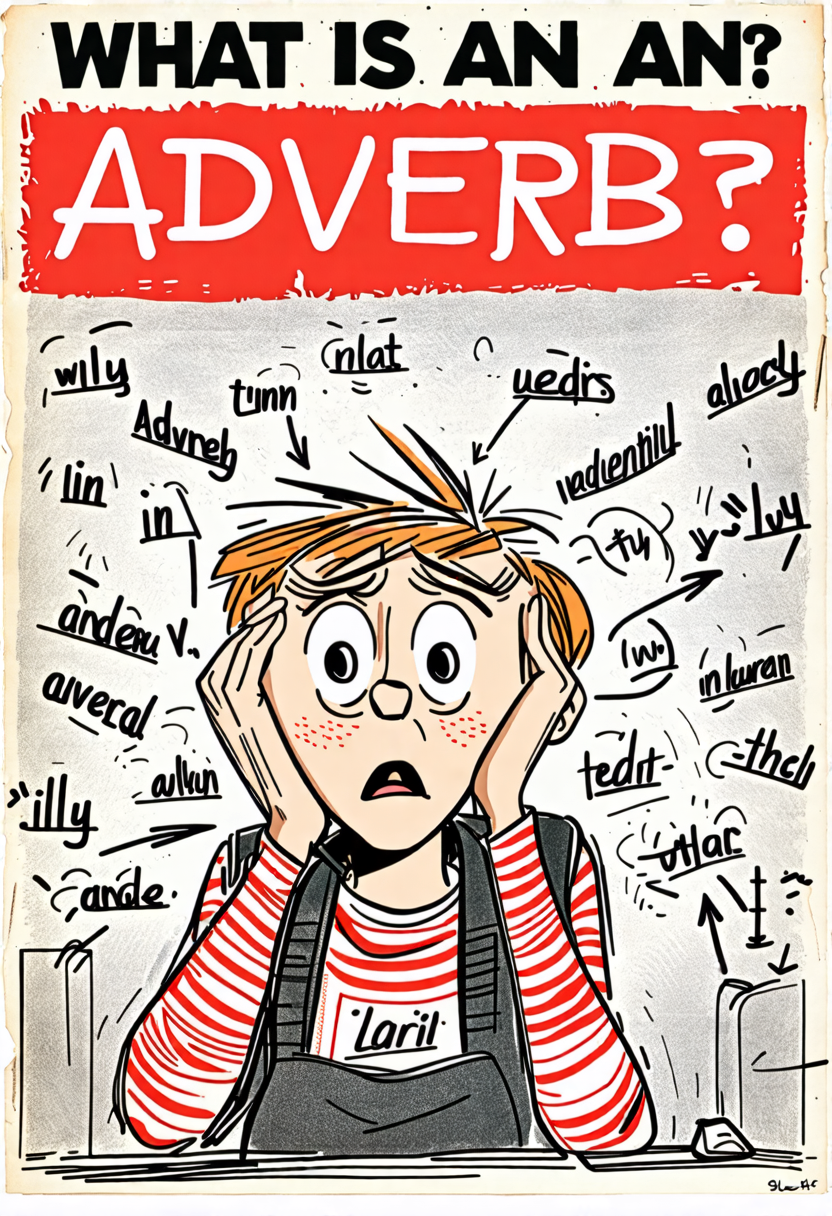What Is an Adverb?
An adverb is a part of speech that modifies verbs, adjectives, or other adverbs. It provides details on how, when, where, and to what extent an action occurs. Often ending in -ly, adverbs enhance sentences by answering questions about manner, time, place, or degree.
Examples include ‘quickly,’ ‘yesterday,’ ‘well,’ and ‘very.’ They create vivid and precise sentences, such as ‘She sings beautifully’ or ‘He arrived early.’ Adverbs can indicate frequency, like ‘often,’ and intensity, like ‘very.’
Definition of Adverbs
An adverb is a word that modifies a verb, an adjective, or another adverb. Adverbs provide essential details about how, when, where, and to what extent actions occur. They often end in -ly, such as quickly, slowly, and beautifully. Examples include words like really, very, well, badly, today, and yesterday.
Adverbs enhance sentences by answering questions about time, manner, place, or degree. For instance, in the sentence ‘She sings beautifully,’ the adverb beautifully modifies the verb sings. Understanding adverbs helps in constructing clear, detailed, and nuanced sentences.
Functions of Adverbs
Beyond defining adverbs, understanding their functions is key to employing them effectively in sentences. Adverbs can modify verbs, adjectives, or other adverbs, enhancing the meaning of the sentence. They can describe how, when, where, and to what extent an action occurs. Adverbs provide essential details that contribute to the reader’s understanding. They can also indicate frequency and intensity, adding depth to the description of actions or qualities. By grasping these functions, writers can create more vivid and precise sentences.
| Function | Example |
|---|---|
| Manner | She sings beautifully. |
| Time | He arrived early. |
| Place | They live nearby. |
| Degree | She is very talented. |
Examples of Adverbs
Adverbs enhance sentences by providing details about how, when, where, and to what extent actions occur. For example, in the sentence ‘She sings beautifully,’ the adverb ‘beautifully’ describes how she sings.

Another example is ‘He arrived early,’ where ‘early’ specifies when he arrived. In ‘They live nearby,’ the adverb ‘nearby’ indicates where they live.
Adverbs can also show the degree of an action, as in ‘The soup is very hot,’ where ‘very’ modifies the adjective ‘hot.’ Additionally, adverbs like ‘often’ in ‘She often visits’ tell how frequently an action occurs.
Types of Adverbs
Different types of adverbs provide specific details about actions, enhancing the clarity and richness of sentences.
Adverbs of time indicate when an action happens, such as ‘yesterday’ or ‘soon.’
Adverbs of place show where an action occurs, like ‘here’ or ‘everywhere.’
Adverbs of degree express the intensity or extent of an action, for example, ‘very’ or ‘extremely.’
Lastly, adverbs of frequency tell how often an action occurs, such as ‘always’ or ‘never.’
Each type serves to modify verbs, adjectives, or other adverbs, providing nuanced information. Understanding these categories helps in constructing precise and vivid sentences.
Adverbs of Manner
Adverbs of manner describe how an action is performed, giving more detail about the verb. They often end in -ly and provide specific information on the way something occurs. For instance, in the sentence ‘She sings beautifully,’ the adverb ‘beautifully’ tells us how she sings.
Here are some examples:
| Adverb | Example Sentence |
|---|---|
| Quickly | He ran quickly to catch the bus. |
| Slowly | She walked slowly down the street. |
| Carefully | Handle the glass carefully. |
| Happily | They lived happily ever after. |
Adverbs of Time
Determining when an action takes place, adverbs of time provide essential information about the temporal aspect of activities. These adverbs answer questions such as ‘When?’ and ‘How long?’ Common examples include words like ‘yesterday,’ ‘today,’ ‘tomorrow,’ ‘now,’ ‘then,’ ‘soon,’ and ‘later.’
They can be placed at the beginning, middle, or end of a sentence. For instance, ‘She will arrive tomorrow,’ ‘Yesterday, we went to the park,’ and ‘He is now ready.’ Proper placement guarantees clarity and fluidity in writing.
Adverbs of Place
Adverbs of place indicate where an action occurs. They provide context by describing the location or direction of the activity. Common examples include words like here, there, everywhere, or nearby. These adverbs are essential for painting a clear picture of the action’s setting.
- Here: ‘She stayed here during the storm.’
- There: ‘The keys are over there on the table.’
- Everywhere: ‘The children looked everywhere for their toys.’
- Nearby: ‘A café is located nearby for convenience.’
Adverbs of Degree
In addition to specifying location, adverbs also describe the intensity or degree of an action, providing essential details for a clearer understanding. Adverbs of degree help quantify the extent of actions, adjectives, or other adverbs.
Common examples include words like ‘very,’ ‘quite,’ ‘almost,’ ‘too,’ and ‘extremely.’ For instance, in the sentence ‘She is very happy,’ the adverb ‘very’ intensifies the adjective ‘happy.’ Similarly, in ‘He almost finished the race,’ the adverb ‘almost’ modifies the verb ‘finished,’ indicating the degree to which the action was completed.
Adverbs of Frequency
Adverbs of frequency indicate how often an action occurs. These adverbs answer the question ‘How often?’ and provide clarity about the regularity of an action. They range from describing actions that happen regularly to those that occur infrequently.
Examples include:
- Always: This implies the action happens every time.
- Usually: Suggests the action occurs most of the time.
- Sometimes: Indicates the action happens occasionally.
- Never: States the action does not happen at all.
Adverbs of frequency are essential for conveying the timing of repeated actions. They help create a clearer picture of routines and habits in writing.
Placement of Adverbs
Understanding the placement of adverbs is crucial to guaranteeing your sentences convey the intended meaning clearly. Adverbs can be placed at the beginning, middle, or end of a sentence. Their position depends on what they modify and the emphasis desired.
Typically, adverbs should be close to the word they modify for clarity. For example, ‘quickly’ in ‘She quickly finished her work’ modifies the verb ‘finished.’ Adverbs of frequency, like ‘always,’ usually come before the main verb but after the verb ‘to be’ (e.g., ‘He always eats breakfast’ vs. ‘He is always late’).







